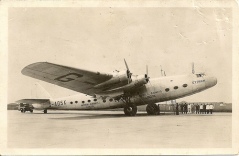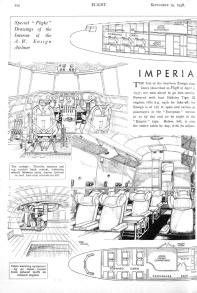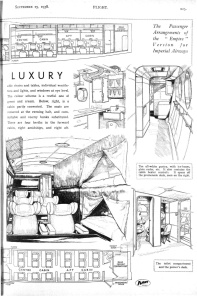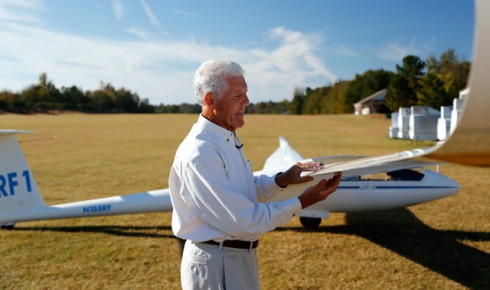You are currently browsing the monthly archive for January 2013.
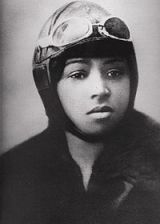 Today marks the 121st birthday of Bessie Coleman, the first African American female pilot in the United States and the first person of African American descent to hold an international pilot license. Unfortunately, not much is known about this amazing woman, but with the few pieces of evidence from the past, her feats may live on in the history books.
Today marks the 121st birthday of Bessie Coleman, the first African American female pilot in the United States and the first person of African American descent to hold an international pilot license. Unfortunately, not much is known about this amazing woman, but with the few pieces of evidence from the past, her feats may live on in the history books.
Born on January 26, 1892, Bessie was one of thirteen children. She grew up in the small town of Atlanta, Texas before moving to Chicago in 1915. Initially she decided to become a beautician given the many job openings available in Chicago’s South Side beauty shops. However, this was not enough for Bessie. She had always wanted to “amount to something” in her life, but did not know to what. At least not until one of her brothers, John, made note of the French women aviators and teasing about them having flying careers. Bessie took this as her cue to learn how to fly.
In November of 1920, Bessie embarked on her journey to France where women found no restrictions on learning to fly. Upon arrival in Le Crotoy (located in northern France), she commenced with her flight training at the École d’Aviation des Freres Caudon. It took Bessie seven months to complete the course, where it typically took ten months. She learned in a French Nieuport Type 82, a two-seated open cockpit biplane. On June 15, 1921, the Federation Aeronautique Internationale (FAI) issued Bessie her pilot’s license.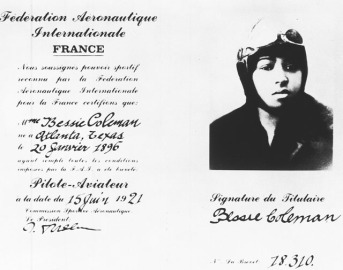
Bessie returned to the United States in September of 1921 only to travel back to France several months later so she could obtain advanced training to become an airshow pilot. Once finished, she traveled back to America to begin her new career. Her first appearance was on September 3, 1932 at Curtiss Field near New York City. Marketed as “the world’s greatest woman flyer,” Bessie’s performance amazed many spectators. Her nickname became “Queen Bess” and she went on to appear in various locations in her home state of Texas, including San Antonio, Waxahachie, and Dallas. At all the airshows in which she performed, Bessie insisted that all audiences be desegregated and that there be only one gate through which everyone attending entered. She only performed if these requests were met.
On April 30, 1926, Bessie fell to her death after a malfunction in her aircraft. A later investigation of the wreckage found a wrench lodged in her controls. Some have speculated that this was more than an accident, but no conclusion was ever made. Aviation lost a valuable member that day. If not for this fatal mishap, Bessie might have opened her flight school; one that she had envisioned building for the purposes of teaching black women to fly. Her legacy will live on though and the aviation community will treasure her as one of the pioneers of flight.
“The air is the only place free from prejudices.” – Bessie Coleman
Initially I had planned to post something on the hot topic of Boeing and its unfortunate luck with the new 787 Dreamliner. However, through the course of my research, I came across an interesting historical video. One thing about research is that if you keep an open mind, you never know what you might find. Usually I write a note to remind myself to come back to it, but this time I just couldn’t resist. So I’ve pushed Boeing to the side for now and decided to share this little treasure with you. Besides, I don’t think Boeing’s problem is going to be solved between now and when I do decide to write about it.
Now you’re probably wondering, what happened on this day in aviation history? January 24, 1938 marks the first flight of the Armstrong-Whitworth A.W. 27 “Ensign”. Designed for the British airliner, Imperial Airways (later bought by British Airways), it was the largest passenger land aircraft of its time. The AW27 was a high-wing cantilever monoplane of light alloy construction. Its design consisted of a semi-monocoque fuselage and retractable landing gear with a castoring tail wheel. Its interior was divided into separate cabins; one model possessed four cabins that seated forty passengers while the other had three cabins that accommodated twenty-seven passengers on day trips or twenty passengers with sleeping arrangements for overnight travel. Only fourteen AW27s were built to which Imperial Airways flew throughout Europe and Asia. With the onset of WWII, the Royal Air Force retrofitted the airplane into the fleet for the use of ferrying RAF personnel. The final flight of the AW27 was a passenger flight from Cairo to Hurn (Dorset, England) in June 1946. No surviving AW27s exist today.
The video below includes a series of press releases from Imperial Airways boasting their new passenger aircraft’s size, luxury, and grandeur. Take note of the tire size in comparison to the people standing next to them. For its time, it was quite an impressive airplane.
Specs
Crew: 5 (captain, first officer, radio operator, 2 cabin stewards)
Capacity: European Routes – 40 passengers; Asian Routes – 27 passengers
Wingspan: 123 feet
Length: 114 feet
Height: 23 feet
Empty Weight: 35,075 lbs.
Loaded Weight: 55,500 lbs.
Powerplant: 4 x Wright GR-1820-G102A geared radial engines; 1,100 hp each
Number Built: 14
Performance
Max Speed: 210 mph
Cruise Speed: 180 mph
Range: 1,370 miles @ 5,000 feet
Service Ceiling: 24,000 feet when fully loaded
Rate of Climb: 900 feet/minute
I don’t think that the pioneers of aviation had this in mind when they asked for federally regulated skies. Pilots, please be cautious of where you fly.
The AOPA released an article and news video about the events surrounding the “Secret ‘no-fly zone'”.
To begin, I would like to express my apologies for the long delay in posts. Life caught up to me and it has been quite an adventure. I would like to kick off the new year with an interesting conversation I had earlier tonight.
I happened to be at the annual dinner for my work this evening. As the city’s museum, we hosted many dignitaries of the area, former mayors, councilmen, and the like. The first hour of the event consisted of mingling and small talk. I, of course, bounced around the room talking with just about everyone. The part I like the most about my job is that I have relations with just about everyone. I enjoy getting to know people, especially if their interests lie in history. As the cocktail hour started to wind down and the formal dinner began, I found myself without a table to sit. I casually go up to the bartender, grab a glass of wine (when in doubt, if you feel uncomfortable in a situation, grab a drink and make it look like you belong) and scan the room for a seat. Our board president’s wife suddenly comes up to me and says, “Come sit next to me, we have an extra seat!” I graciously accept and quickly settle in. Before I knew it, I was sitting next to the mayor of the city. Now what the heck do I talk about is what I’m thinking. Of course I discuss the upcoming centennial celebration that the city is about host, but it is obvious that she has talked about it so much that she’s ready for a normal topic. Can you guess what I brought up? You guessed it: aviation.
It was a simple transition to the topic, but once I did, the mayor had some things to say. She laughed a little, intrigued to be talking to a pilot (although I’m still under instruction), and she even told a few personal stories. One story she recalled dated from 1983 about a flight from Chicago to Philadelphia. She mentioned that it was the most turbulent ride she ever had, but that she still would get into an airplane to fly.
What I learned from this is that it seems that many of us share a similar story; our most memorable flight. Whether it be momentous because we were afraid, agitated, or even excited, it links us to a common thread. Aviation influences us all, even if we do not realize it. So take a minute and think about your thoughts on aviation. How has it impacted you? Because, believe me, it’s more than just a flight.

